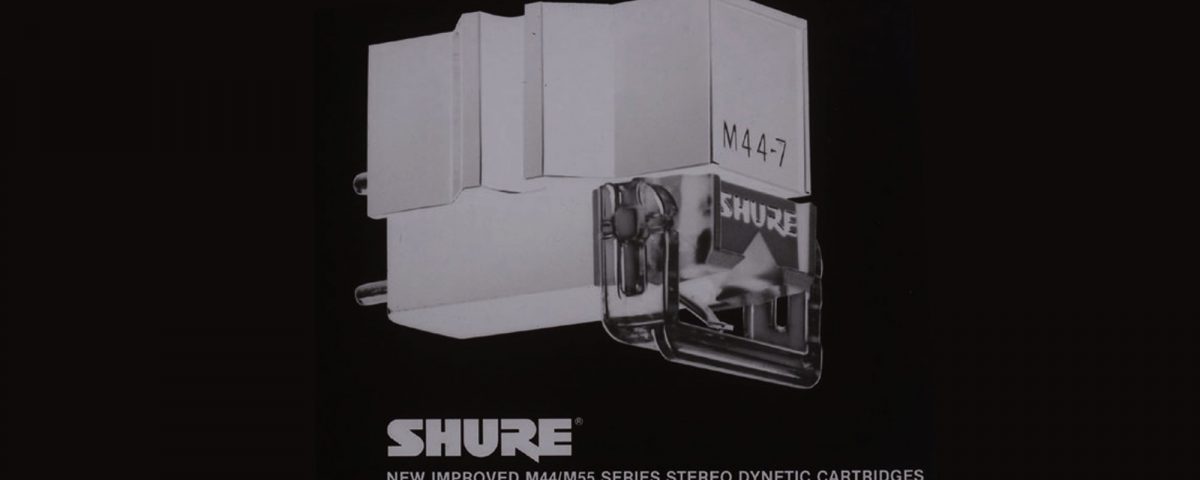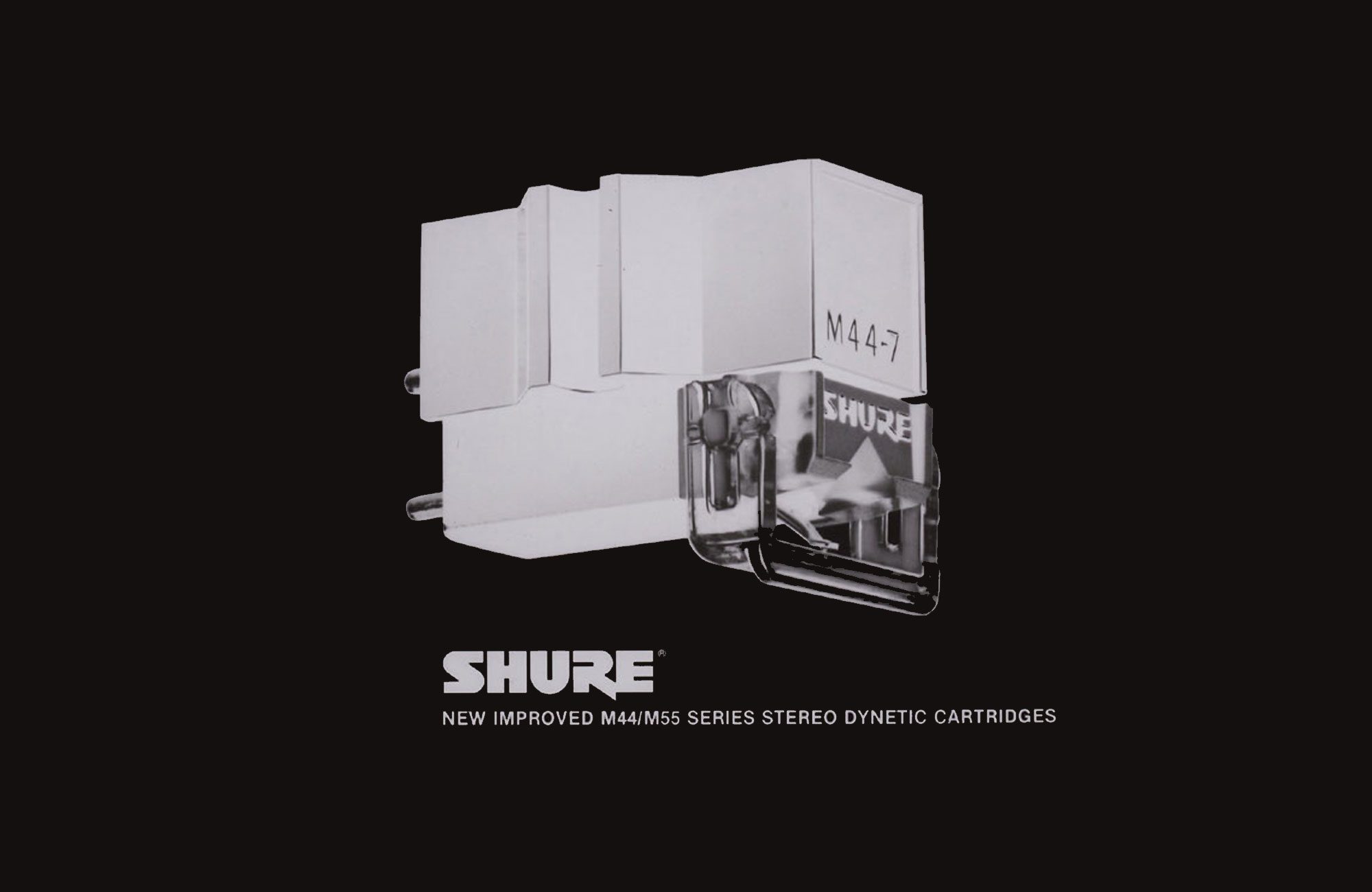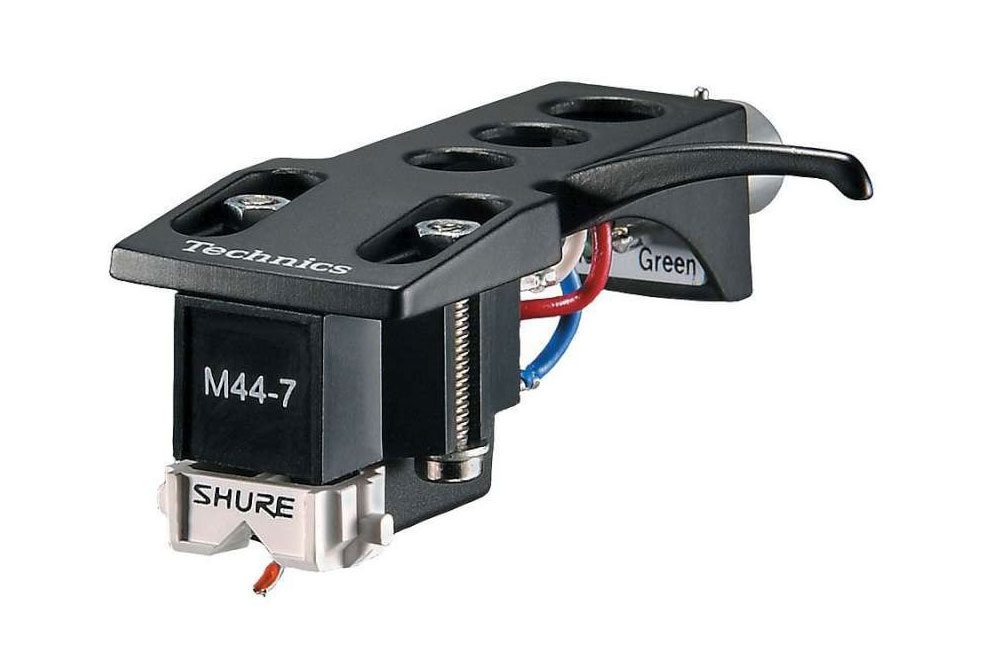Shure M44-7: A Cartridge Heard by Millions, Known by Few



Words and graphic by Rafe Arnott
The future of the past was so much cooler than the present.
In the ‘70s and ‘80s there were going to be exploding moon bases in the late ‘90s (Space:1999 – moon bases in 20 years – swoon!), Replicants were going to be among us in PKD’s rain-soaked and dystopian 2019, and there was some crazy shit going on in a galaxy, far, far away.
But, of all the far-flung scenarios I could imagine happening in the decades to come, one that never occurred to me was a future without the Shure M44-7 stereo pickup moving-magnet cartridge – produced since the mid-60s – which went end-of-line in 2018 along with the rest of Shure’s phono products. It's last retail price listing was $125 USD. A search revealed there are still a few available on eBay and Amazon for $400~$500 USD.
Let’s rewind so I can explain. The first legit turntable I bought was a Technics 1200 MKII, and my friend Bobby C said I had to get a Shure M44-7 cartridge to go with it. This was around 2009 when I was first putting together what I considered a ‘real’ stereo system and I didn’t know a lot about the dark arts of phono stages, tonearm mass, VTA or azimuth adjustment. But Bobby C did, he was my hi-fi witch doctor and he helped me source what I needed on an extremely modest budget.
I still clearly remember him helping me set up that 1200 – balancing the tonearm after offset-mounting that M44-7 in the headshell by eye so it was angled-in parallel towards the groove. “That’s how you want it,” Bobby C intoned, tightening the headshell bolts with an impossibly tiny screwdriver, “for the tracking.” Drinking beer, we continued to hook-up the turntable and he threw on an old Stevie Wonder LP I had – immediately cueing-up a break on one of the tracks, he proceeded to backspin, hold and cut the LP with a series of lightning-fast hand movements. As always, I was rapt, not because I wanted to do it too, but because I had grown up with such respect and reverence for the traditional turntablist and their myriad techniques – I never realized at the time that the M44-7 was the cartridge that had brought the tunes that helped form the foundation of my musical tastes for almost a decade.
Hip hop, rap and the rise of the battle DJs was what my 16-year-old self listened to when I wasn’t listening to my father’s rock, blues, electronic and folk record collection at home. Friends had bootleg VHS tapes of epic throwdowns on the wheels of steel that we watched in-between worn out tapes of Future Primitive, and The Search for Animal Chin. Breakin’ and Beat Street were two of the first films I saw that opened the window onto this other world for me. Groups like Eric B. & Rakim, Grandmaster Flash and the Furious Five, Public Enemy, BDP, Gang Starr and the Jungle Brothers were constantly spinning on all my friend’s turntables and on my Walkman.

The M44-7 was the cartridge that had brought the tunes that helped form the foundation of my musical tastes for almost a decade.
He proceeded to backspin, hold and cut the LP with a series of lightning-fast hand movements...
–Rafe Arnott
I’m telling this story for two reasons; one, the sound of that 1200 still haunts me and like chasing the dragon for an addict, it’s the feel of that first system (aforementioned 1200, an original NAD 3020 and a pair of Klipsch Heresy II) that I still try to build on with every iteration of hi-fi I’ve curated throughout the in-between decade. The second is the fact that the Shure M44-7 was integral to shaping how music was heard not only for my generation, but Boomers as well.
How did it do this? Well, during the ‘60s it was one of a small group of cartridges installed into hundreds of thousands of jukeboxes influencing the attendant millions of teens who worshipped at the altar of 45s that the jukebox represented (the Shure’s unique retractile-stylus suspension system made it ideal for tracking a groove in the face of bumps, grinds, vibrations and shakes). Designed along the lines of a broadcast cartridge (think Ortofon, EMT, Denon) so as not to impart undue groove wear, never, ever skip – be loaded with lots of weight to help achieve that end – and withstand back-cueing for radio play, the M44-7 had the ideal traits that DJ-specific cartridges would be modelled on decades later. More than 20 years after its introduction, it was the M44-7’s rise to prominence as the cartridge of choice for hip hop and rap DJs who were creating the art and sound of turntablism in the ‘80s – thanks again to its abilty to hold a groove no matter what abuse was laid on it – that put it in front of me.
As I got more into vinyl playback, I also unraveled the mysteries of cartridge design thanks to the Internet and that Shure M44-7. How did a cartridge actually work? I wanted to understand that relationship because where the needle hits the groove is where the music comes from (the stylus – the diamond that tracks the groove – is connected via cantilever to a magnet array which passes through a coil of metal. When the magnet array tracks the movement of the cantilever it creates voltages analogous to the record's groove). The Shure’s big, ballsy sound (9.5 mV, 450 pf load) and music-first sonic aesthetic hooked me up for the deep dive into high fidelity that hasn’t stopped since. But, the M44-7 was never considered an audiophile cartridge for more than a minute in the ’60s by the engineers who designed it – most people outside DJ circles have never heard of it. Nevertheless, in this hobby’s budget and vintage sectors of enthusiasts, Shure cartridges still retained a dogged following, although not the M44-7, rather, it was the M97xE that got plenty of exposure with audiophiles. I moved on from the Shure after learning more about cartridges. I wanted to hear other stylus profiles like those from Rega, Ortofon, Dynavector, etc. (like the far more well known Denon 103, the M44-7 also features a spherical stylus tip).
The fact that one cartridge design impacted my life, and so many others is inspiring. Once again revealing how superlative engineering and iconic industrial design can culturally influence generations for decades.






